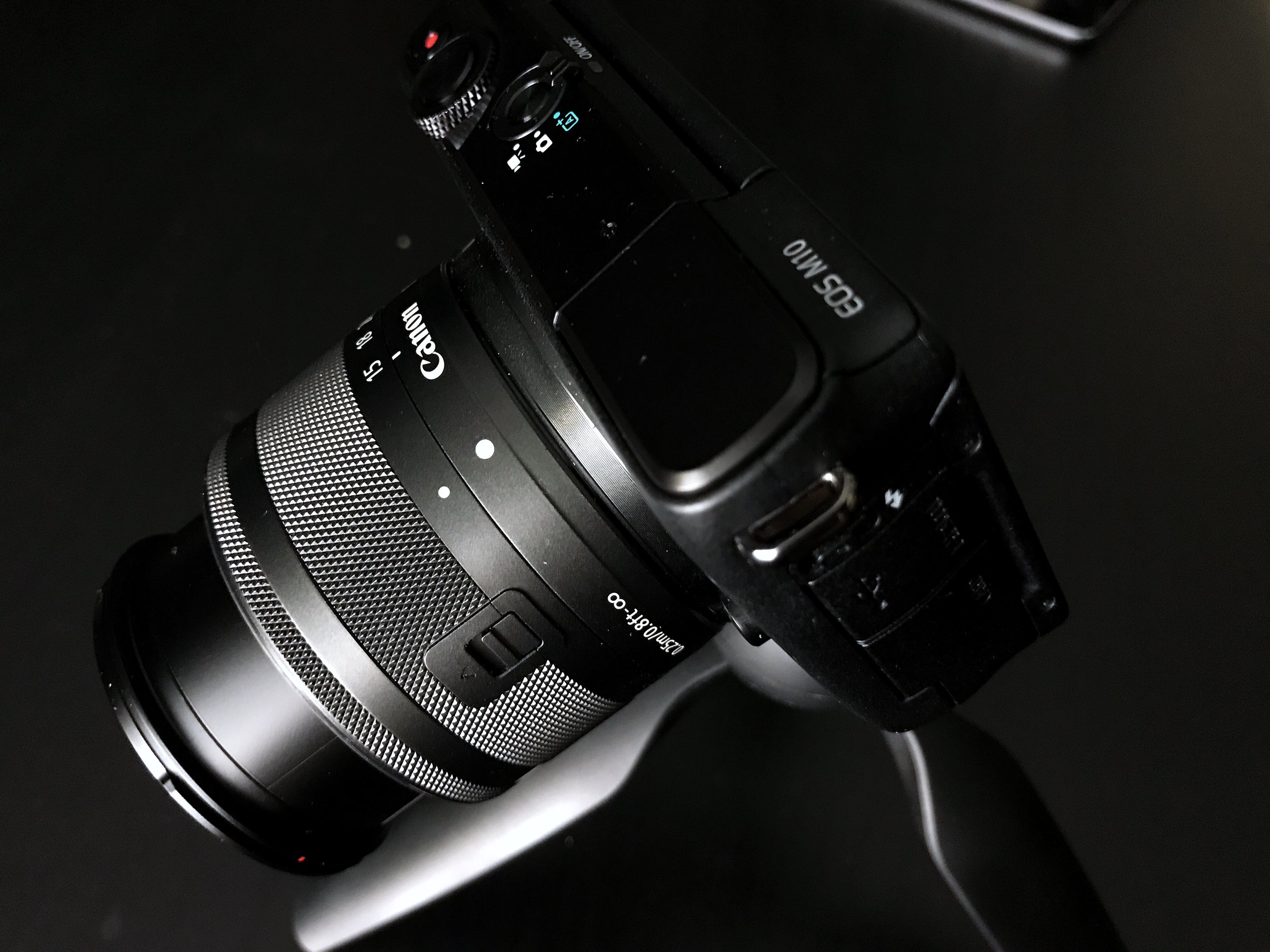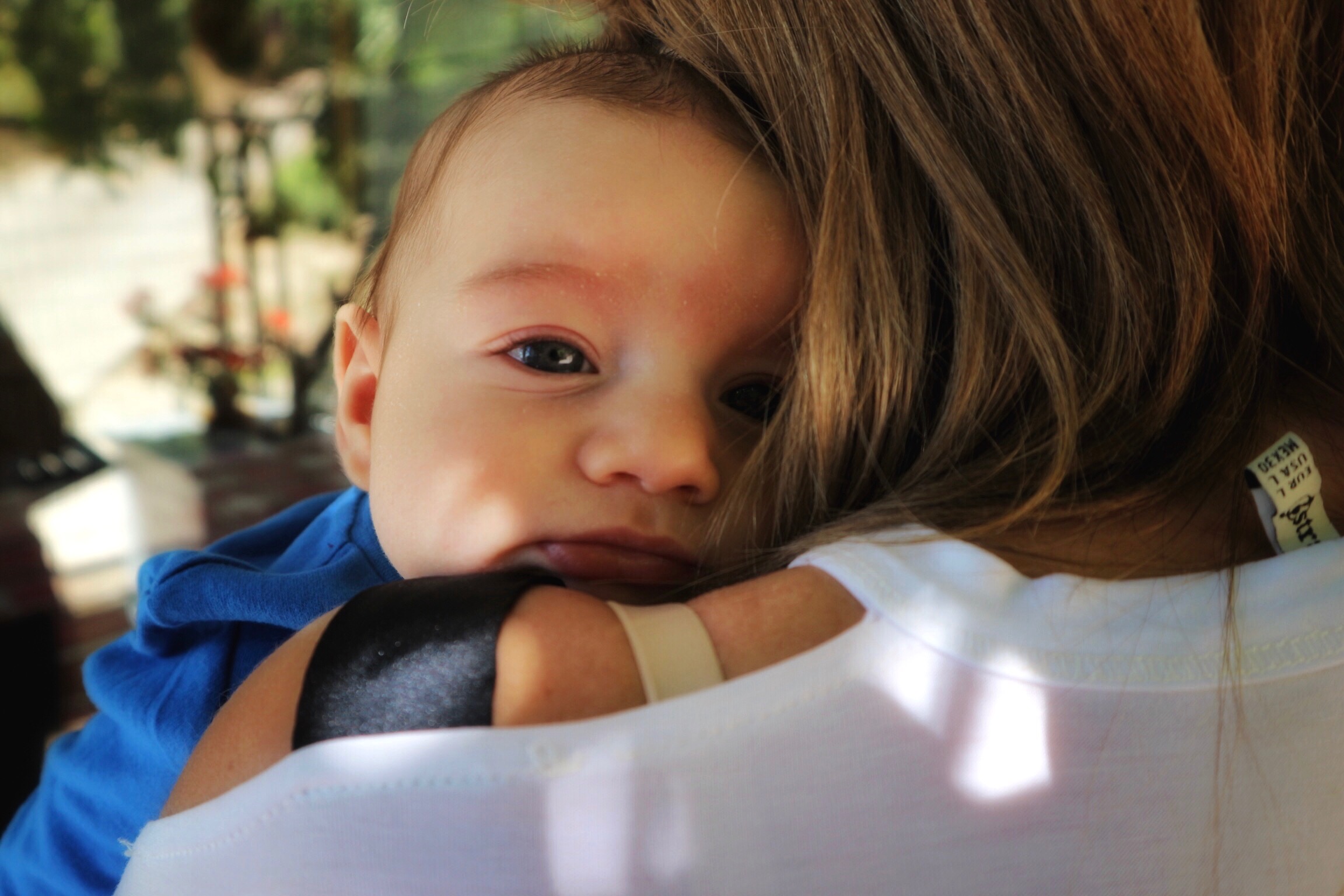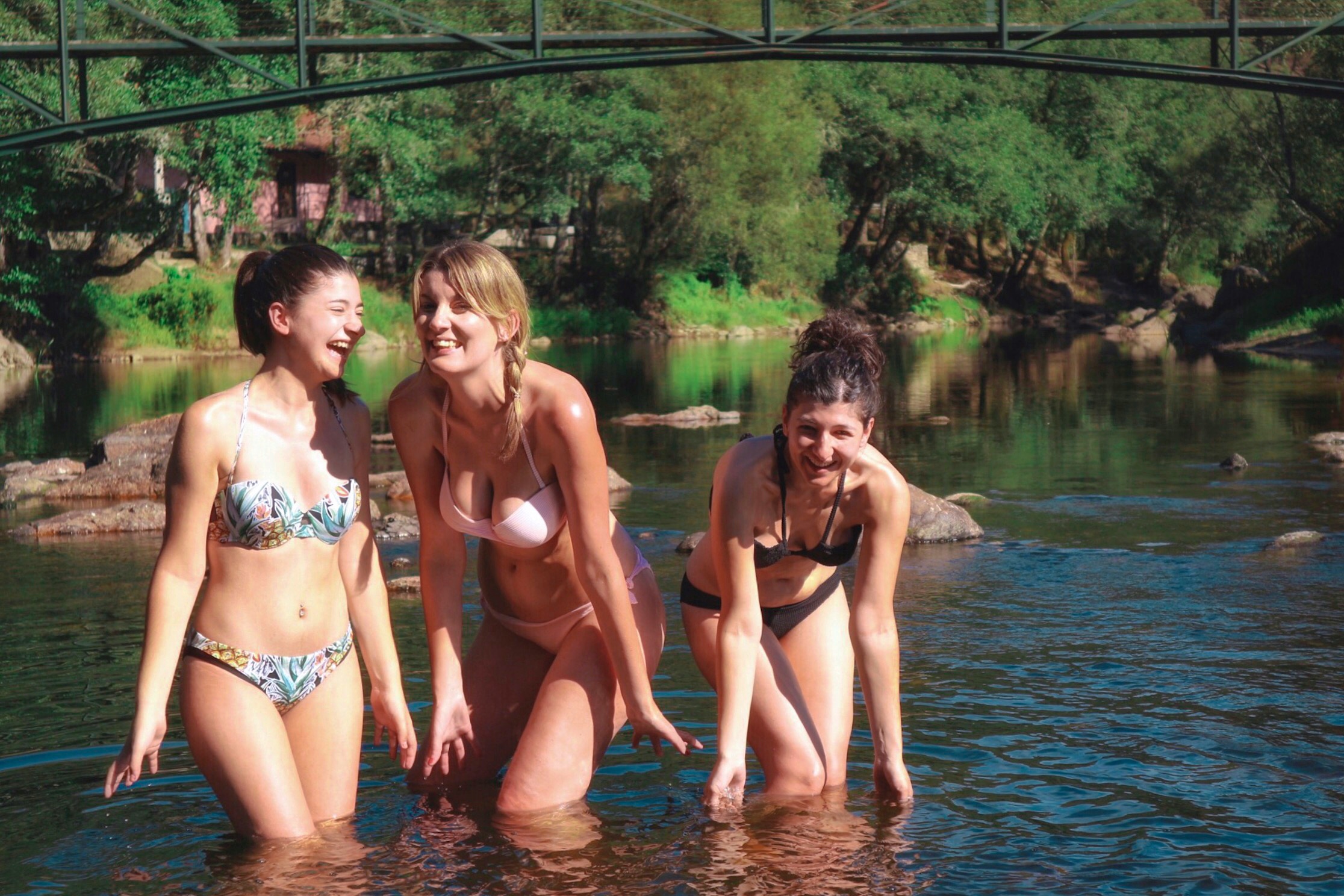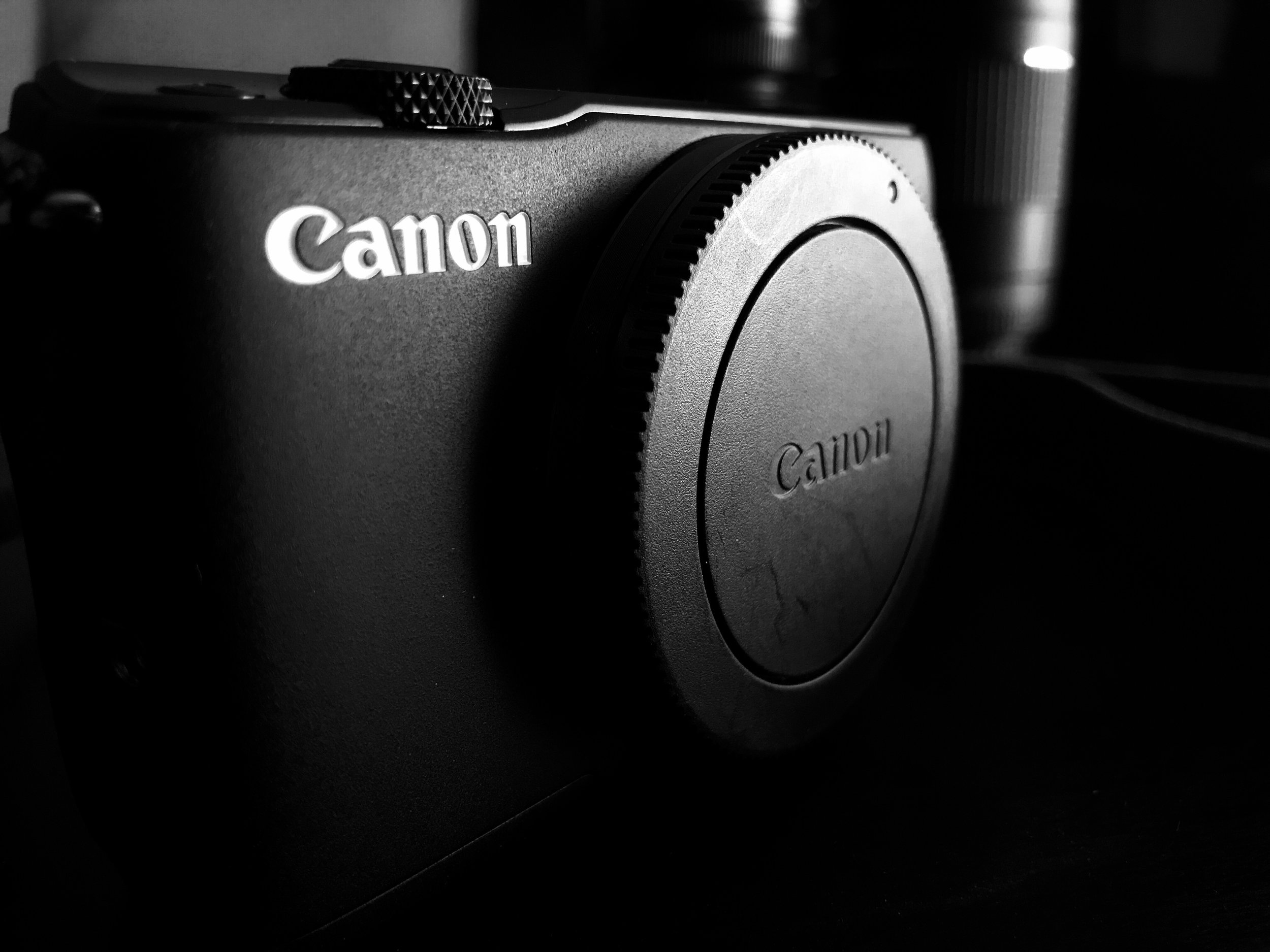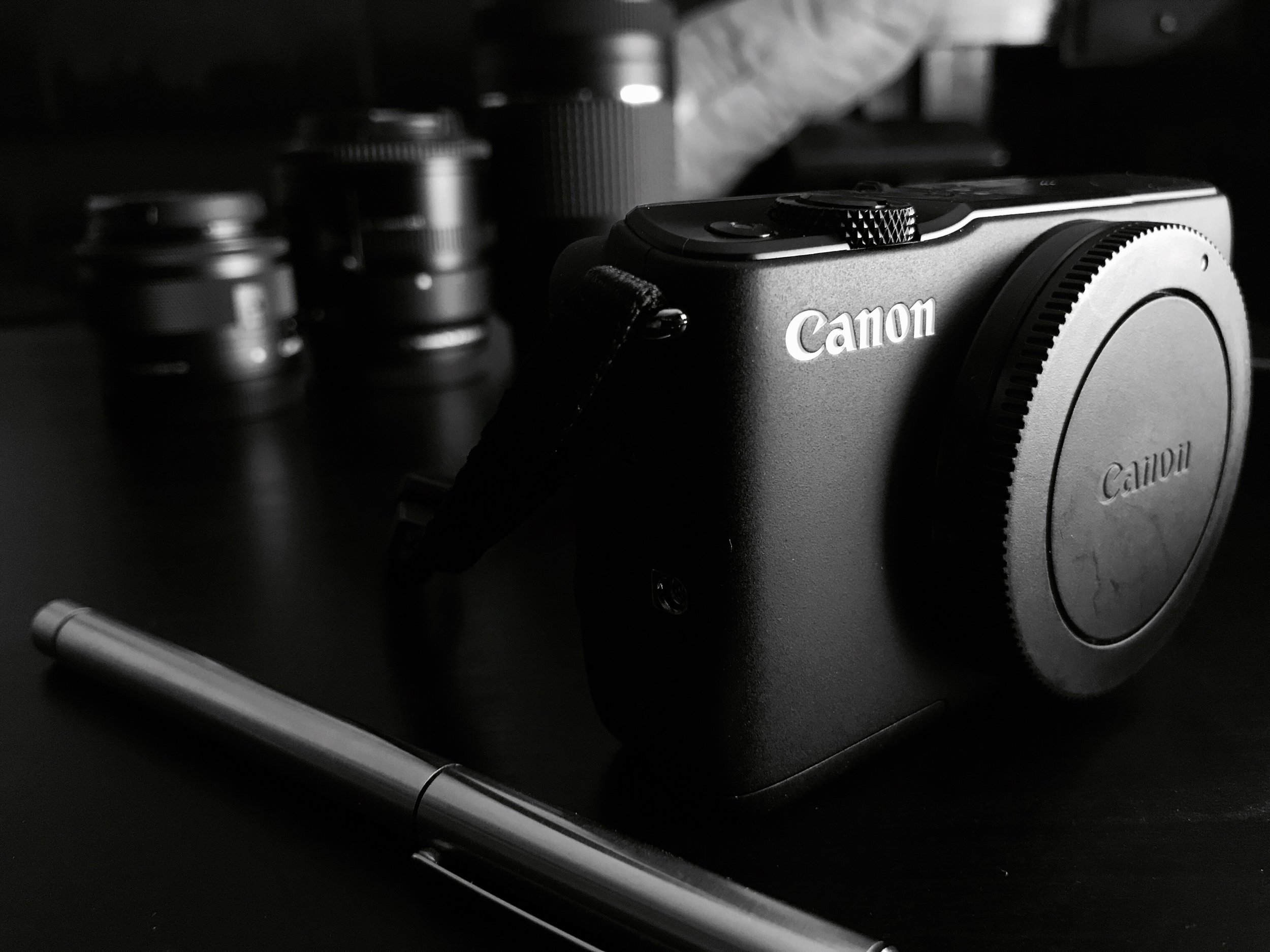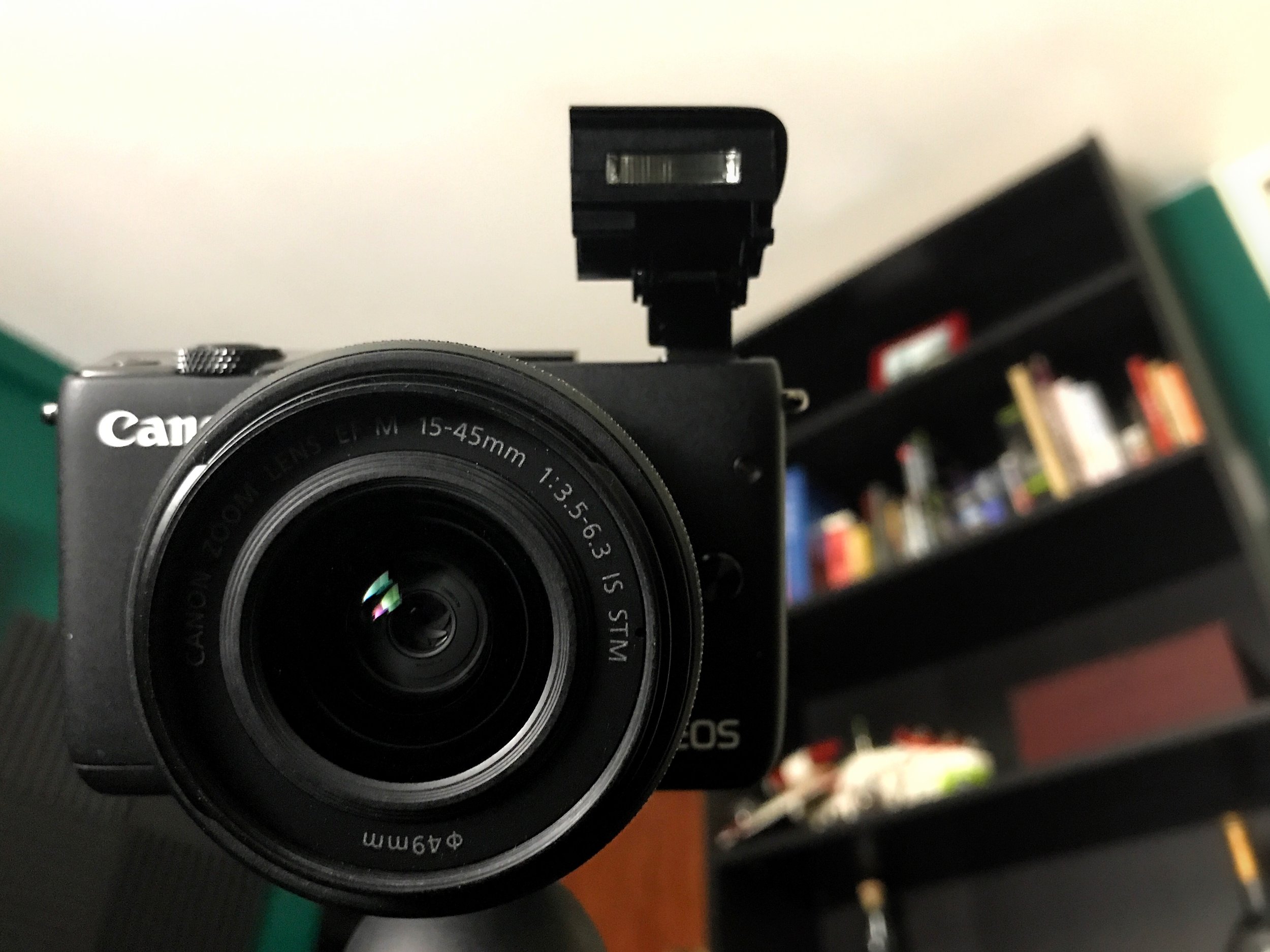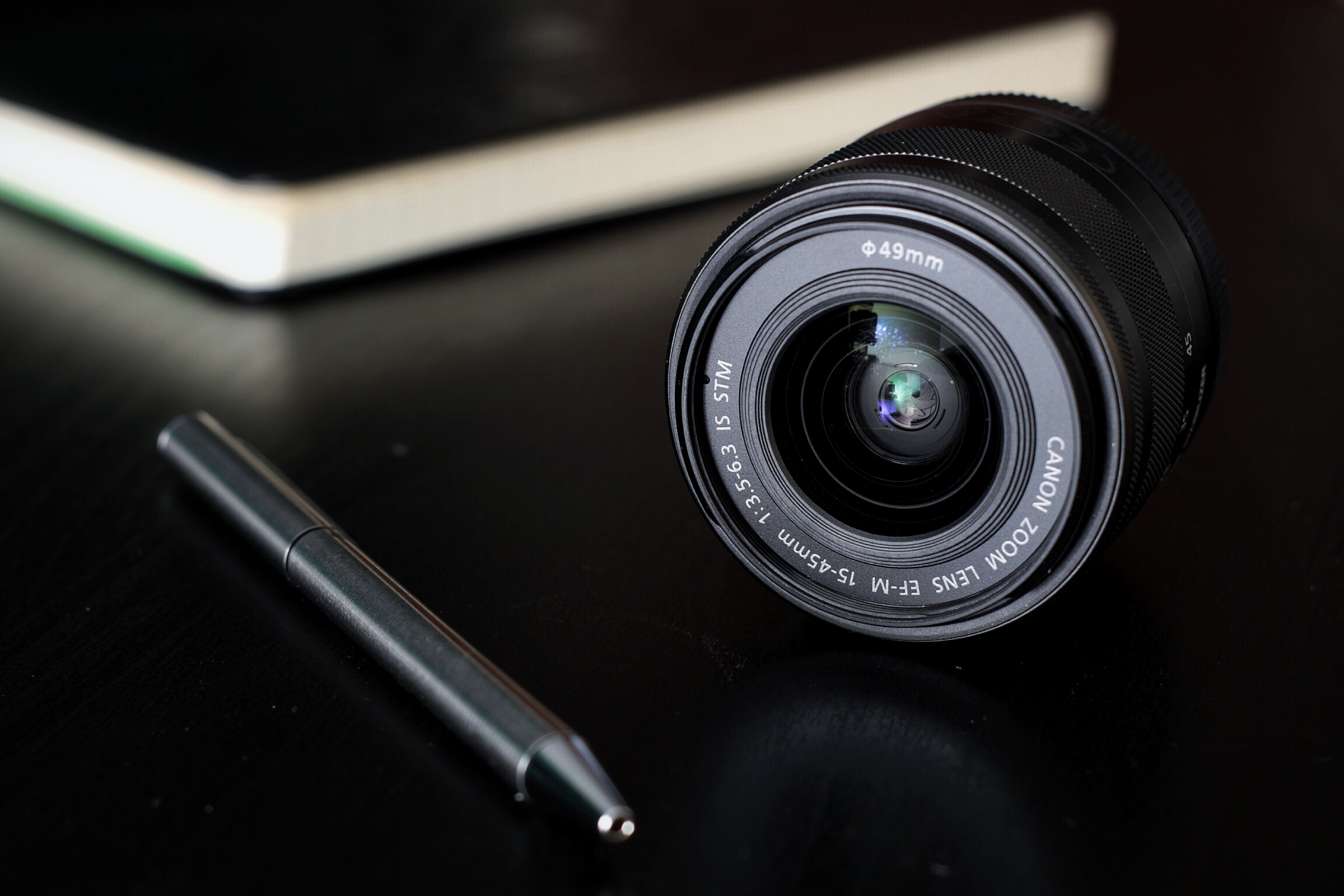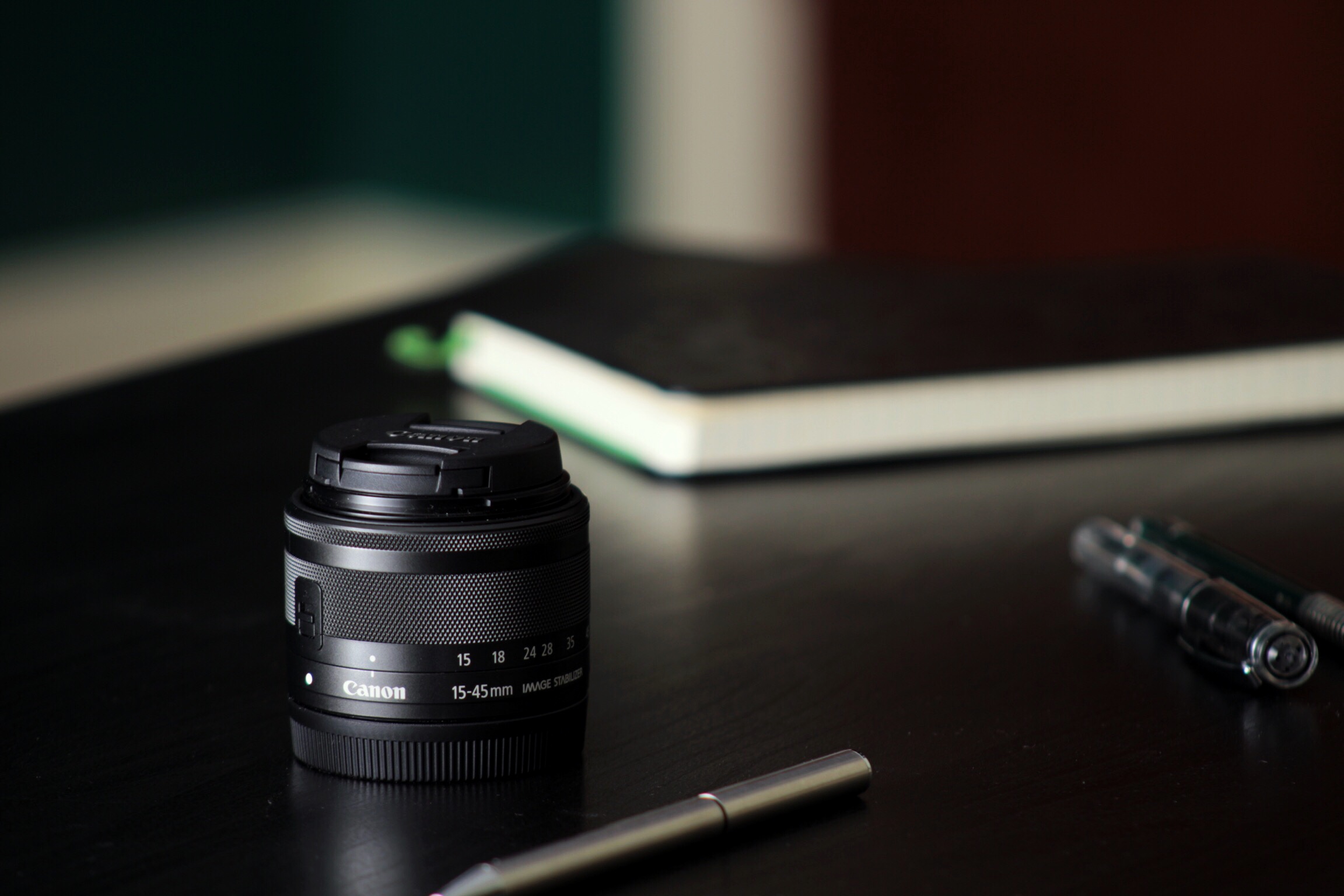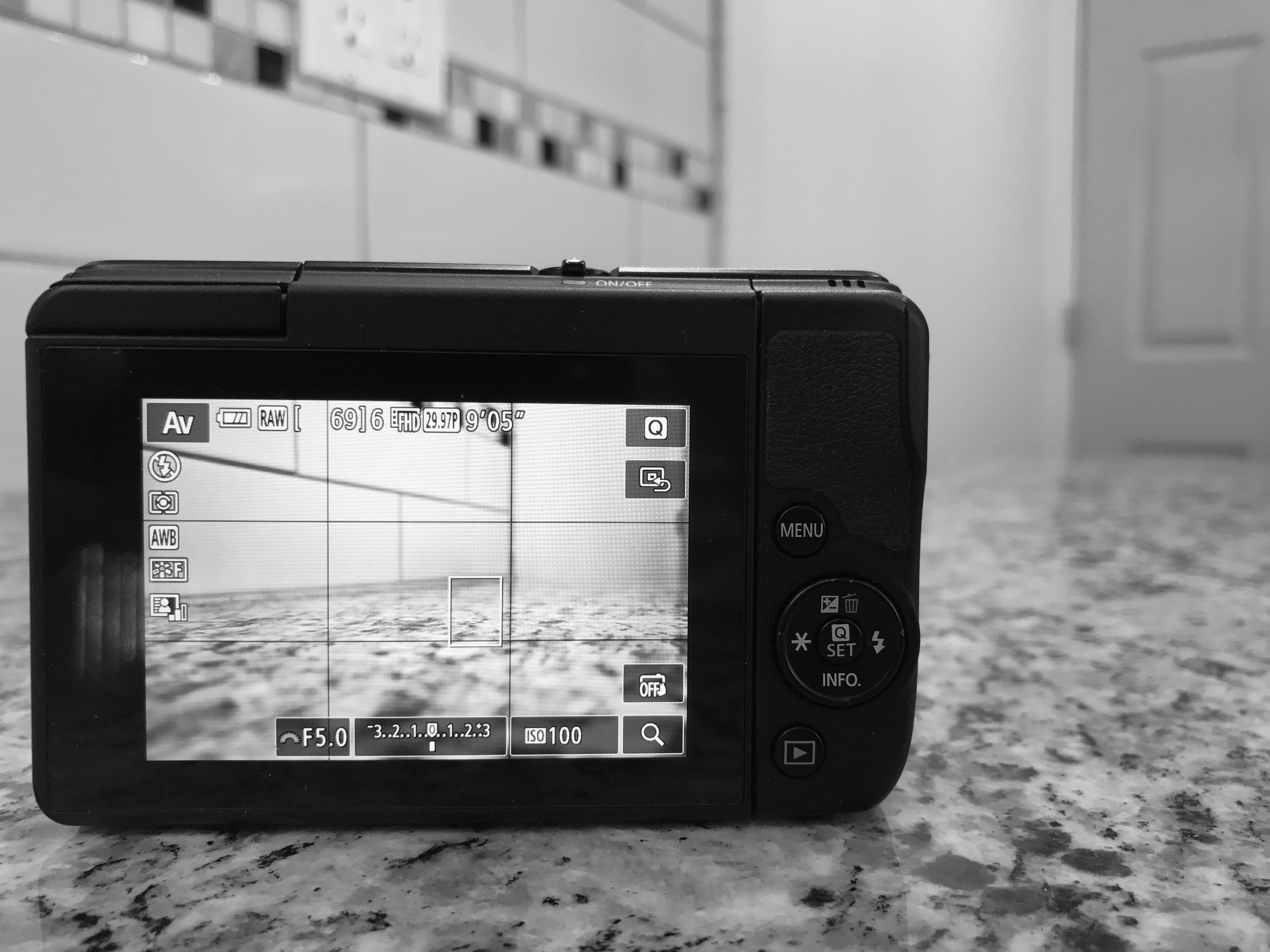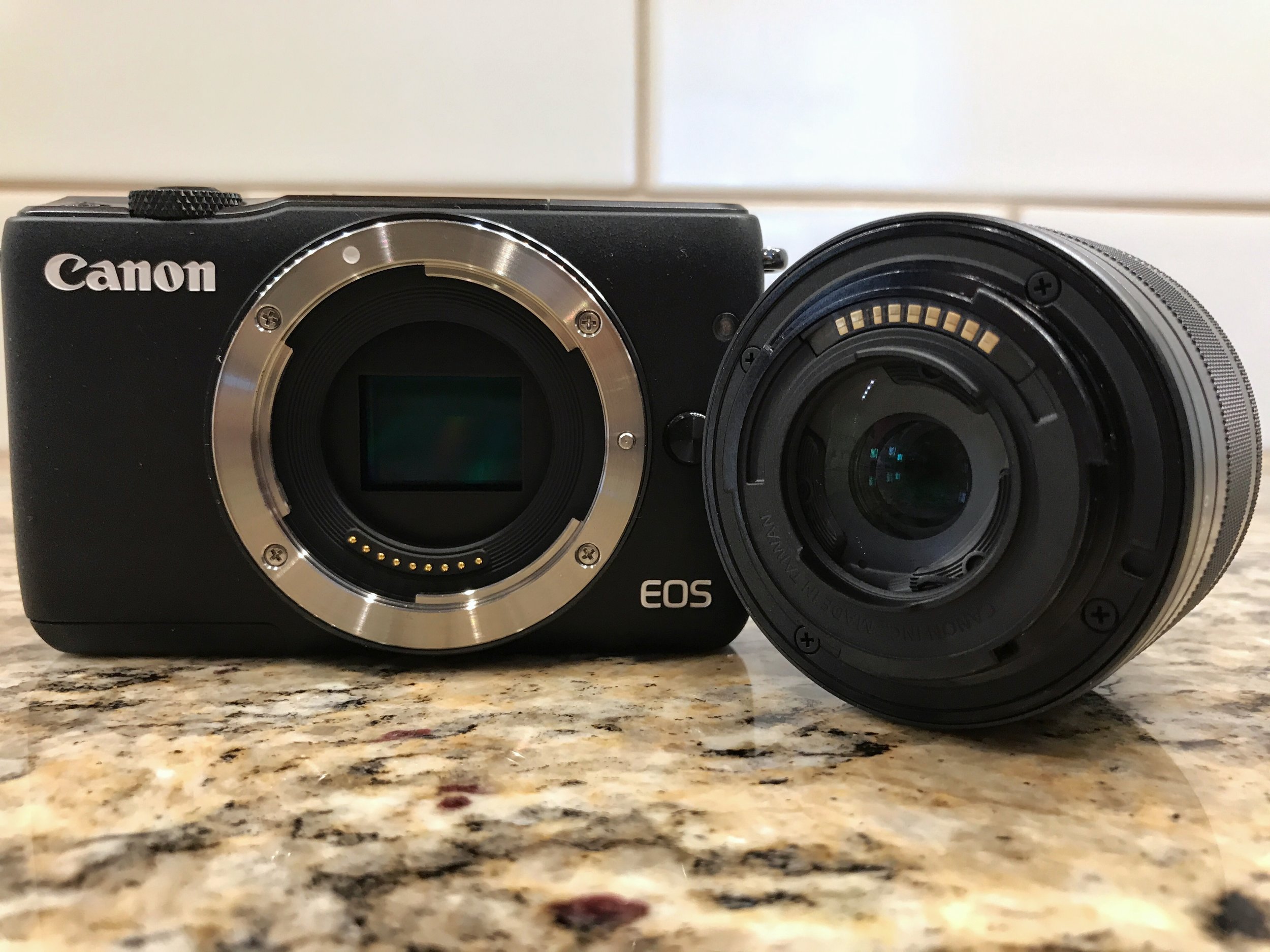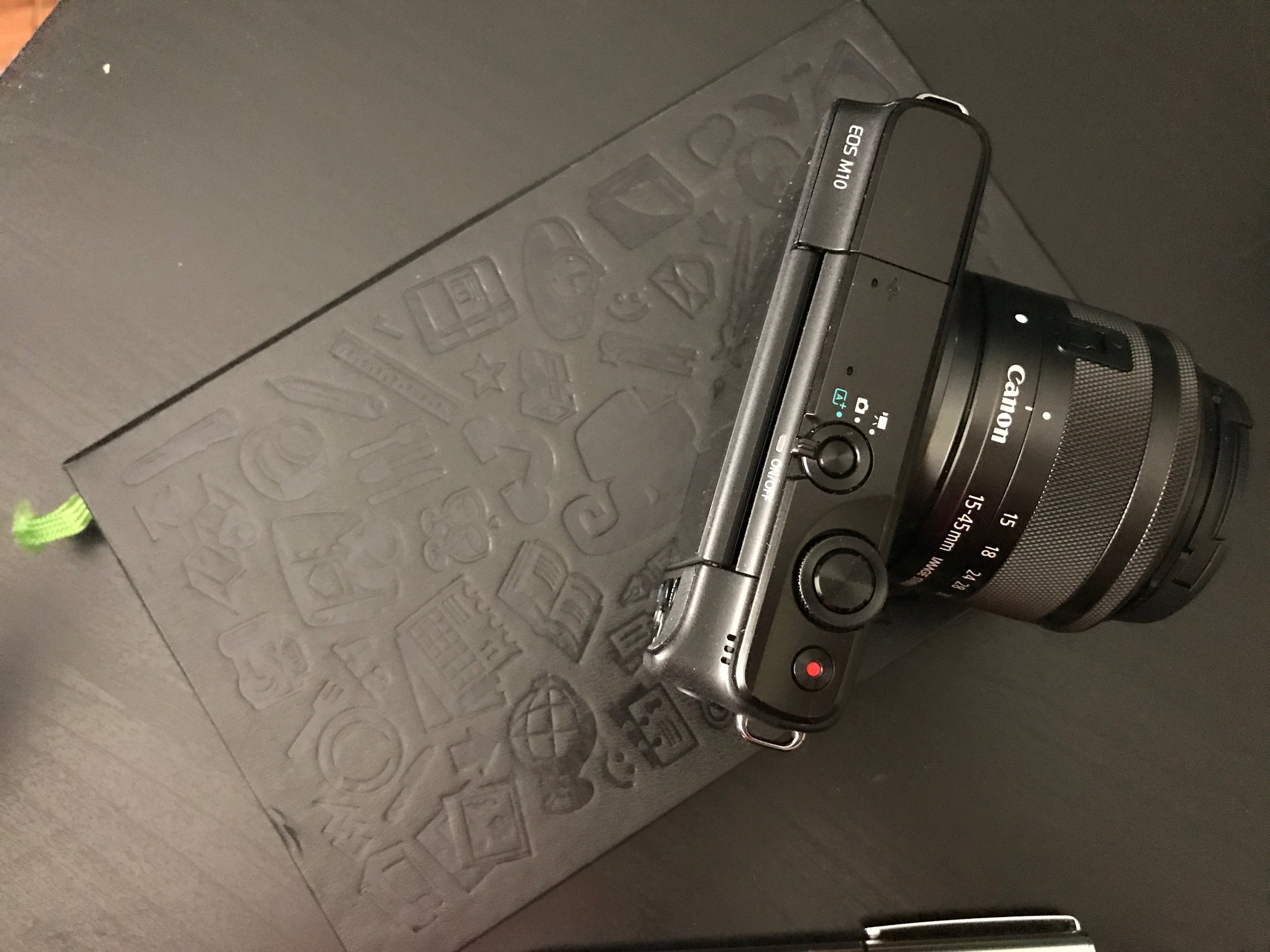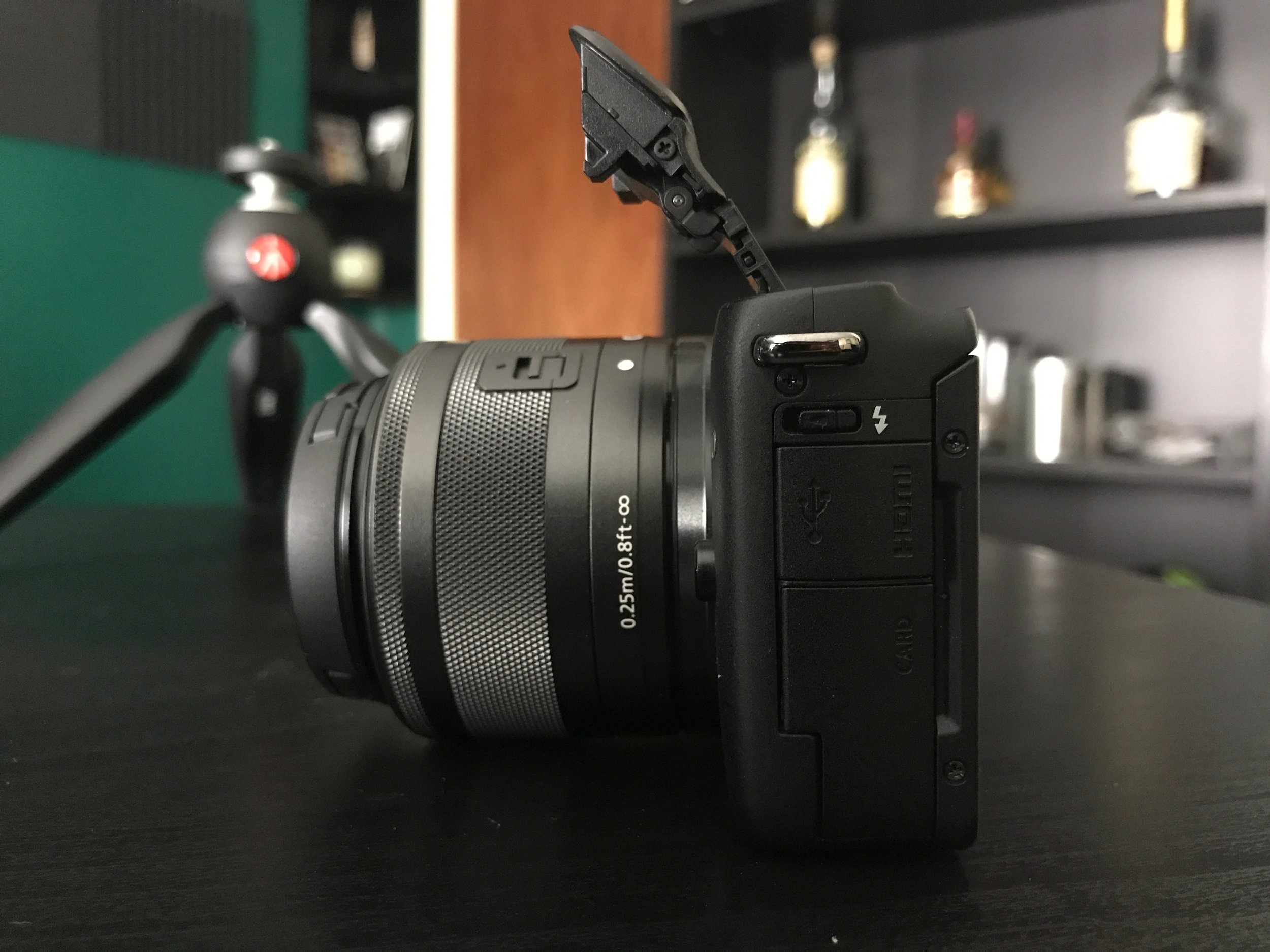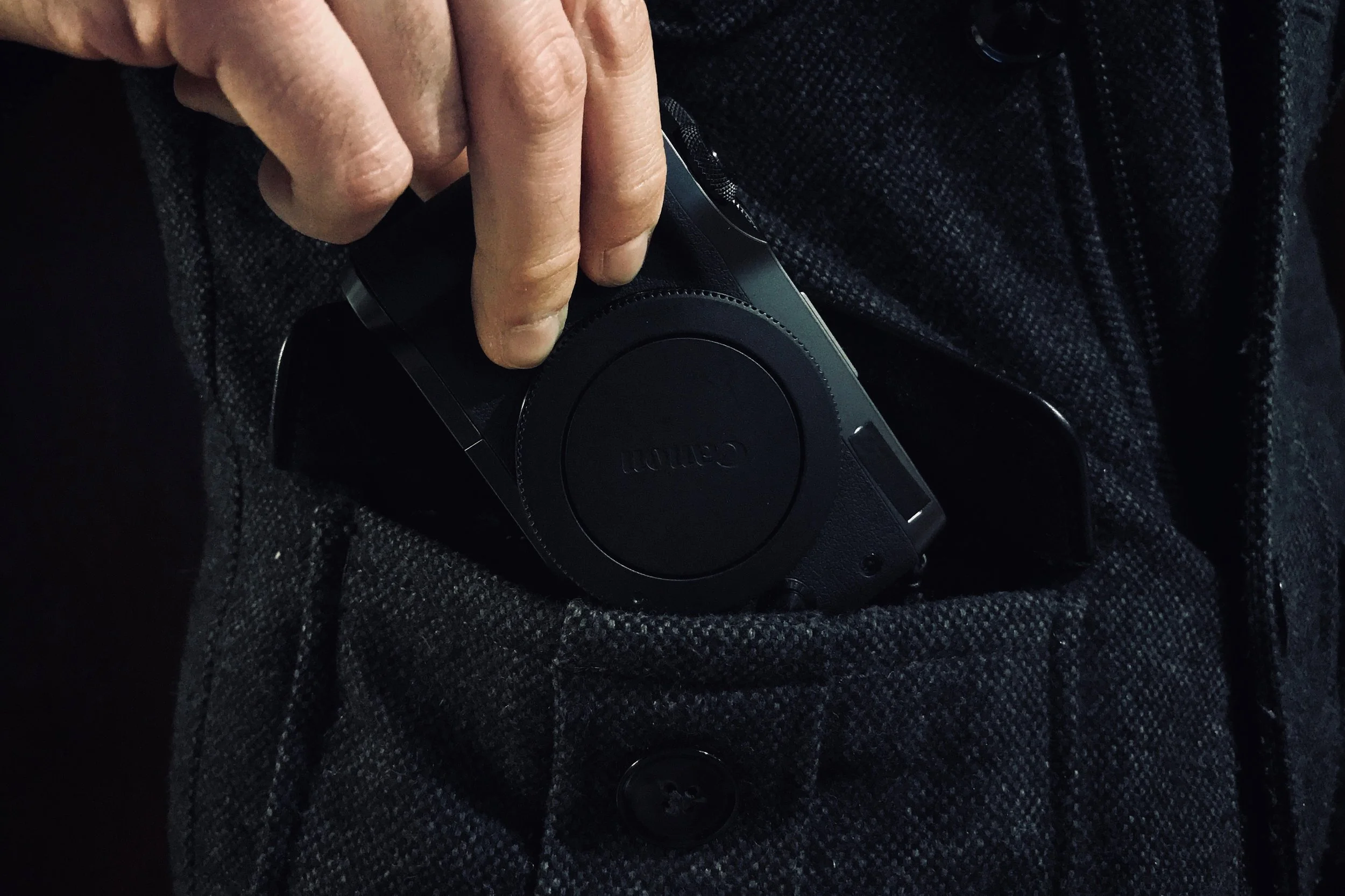Canon EOS M10 review: A very capable travel camera just got more affordable.
REVIEW
All Amazon links are affiliate links. I talk a lot about accessories I use or recommend in this article but do not go in depth about them. Feel free to check the links if you are interested. In the future I may do reviews on these accessories.
Why the M10
If you haven't read my previous post I mentioned why one would want and would not want a dedicated camera for traveling. I also mentioned why I came to the decision of choosing the Canon EOS M10. If you haven't read this article I would suggest you take a look at it.
In summary of that post I chose the Canon EOS M10 because it was the cheapest mirrorless interchangeable lens camera with better performance than a smartphone that I could find. It is the next progressive level to surpass a smartphone such as the iphone 7. Its large aps-c sized sensor gives me the quality I need yet fits into a category of cameras with plenty of affordable and quality lenses. Its mirrorless design means it is light and small. Perfect for a travel camera. The ability to change lenses provides me the versatility that no smart phone can provide.
Why this camera? The Canon EOS m10 is a well balanced camera and is an inexpensive mirrorless interchangeable lens camera. It will giveimprovement in quality over a smartphone and more versatility to shots while still being compact and light. The Canon EOS M10 not only performs well but provides form, fit, and features that make it excel for travel use.
Ergonomics and Build Quality
The ergonomics on the Canon EOS m10 are quite nice. Weighing in at about 10.6oz or 301g with the battery and sd card installed the camera is small, light and easy to hold. In terms of gripping the camera there is a small amount of rubber with a flair in the body above the back buttons so one can rest their thumb. There is no grip along the front nor any change in thickness to the cameras body to hold on to but there is a screw hole on the side to mount one of canons own accessory grips (or a third party grip). Because how light the camera is an aftermarket grip would only be necessary if using a larger lens.
When no lens is installed this could easily be mistaken as a point and shoot camera. Make no mistake, mirrorless cameras provide the image quality of those DSLR's but in a smaller package. The dimensions are approximately 4.25 x 2.62 x 1.38 in or 108 x 66.5 x 35 mm with no lens. Like I said this is a very small and light camera which is surprising for the versatility and quality it provides. Except for the cable port door (which you might not even use because of features i will describe later) and the pop up flash all hinges feel sturdy. All the buttons are plastic and the lens mount is metal as to be expected. Even though the camera is made of plastic it feels sturdy and dense in the hand. In terms of looks the camera doesn't turn any heads (except for the fact of how small it is compared to a DSLR) but its not ugly by any means.
Interface
The camera is clean and simple having little buttons. The totality of the buttons on this camera are a shutter buttons and one control wheel, record button, mode select toggle with only three modes with power button in the middle, menu button, preview button, wireless button, and circular d-pad with a set button in the middle. This might suggest this camera is lacking in function and features but this is far from the case. This is quite deceiving as the M10 contains an outstanding touch screen. Thru this touch screen one can simply touch a focus point or touch and adjust a setting. The most prominent feature of this camera is this touch screen and the touch screen interface.
The 3in display can be toggled to offer as much information about your shot or one can wipe away all information giving just to image to be captured. The touch screen is on par with modern smart phones; responsive and accurate. One can zoom in and out, swipe thru pictures, toggle settings, and select icons with ease. I was blown away that a device that is not a modern smartphone could have such a responsive touch screen. I have grown accustomed to using the touch screen on my iphone 7 easing the transition and making me feel "at home' with this new camera. Using the touch screen along with the wheel makes me feel as though I can quickly adjust settings as needed. Navigation is not limited to the touch screen as the UI can still be controlled via the circular d-pad. So if you are wearing gloves you may still be able to do everything via the buttons.
I will not talk too much about the menu setup. All canon cameras have the same menu set up which is not too complicated to figure out. One can navigate it using the touch screen or the d-pad.
Modes
The camera can be as simple or as complicated as you want it. The camera has 3 modes; auto, manual, and video. In auto mode the camera will focus and adjust to exposure automatically depending on the situation. The camera can intelligently figure out what type of shot you are trying to shoot for example a landscape shot, portrait shot, a picture of food, etc. In this mode a beginner can pick up the camera and start taking perfectly exposed quality pictures. If you are not a photographer then you would not be disappointed leaving it in auto mode. Automode does a fantastic job and provides well exposed and shoots nice photographic images.
The camera has a more complex side. Switch to manual mode and one can slowly start to strip away the safeties. Thru toggles in this mode and changes in menu one can allow the camera to take as much or as little control as desired. For beginners this is great as they can slowly chip away at the cameras automation to help them better understand how to use the camera properly.
The camera has a long list of modes to choose from; manual exposure, aperture priority, shutter priority, program AE, hybrid auto, creative assist, self portrait, portrait, landscape, close-up, sports, handheld night scene, food, and HDR. These modes will adjust the exposure to provide the best results for the scenario. These modes also work very well. The camera also has filters/effects that can be applied to a photo such as fish-eye effect, art bold effect, water painting effect, miniature effect, toy camera effect, soft focus and grainy B/W.
The untethered setting is "manual exposure mode" in which the user has control of all methods to adjust exposure such as aperture, shutter speed and iso. The lcd will present a live view of what the picture will come out as which allows the user to adjust setting and see the result before a picture is taken. The camera also has an exposure meter which will tell you how exposed the picture is. These are great features to help ease someone into photography by helping them understand the exposure triangle.
Changing to a different setting or mode is just a few touches away. By clicking the "set" button a handful settings is presented for quick adjustment such as auto focus modes, image quality, video quality setting, burst mode, timer, white balance, color profiles, exposure correction, exposure metering, and picture aspect ratio. Also with a simple touch the top left corner one can select a shooting mode. This camera is very quick to adjust setting so that you don't miss that shot. I believe the quickness of changing settings on the superb touch screen coupled with the simplicity of the camera make this a very easy and pleasant camera to use. Again these can be selected using the d-pad or the touch screen.
Display
The display is a 1.04 million dot 3 in touch screen that is bright, colorful and has good contrast. This is a very sharp and vivid screen. This is important since it is the only method to view what you are looking at since there is no view finder. An electronic viewfinder (EVF) would have been nice but would have increased the price significantly. Canon's EOS M5 which is the most expensive camera in their M (mirrorless) line has an EVF. Contrast and brightness of the display can be adjusted in the menu. I keep the screen at full brightness and in direct sunlight it does lose contrast and color but is still very readable.
The display is adjustable in that it can flip up 180 degrees so that the display can be seen from the front. As soon as it flips completely around the image on screen is flipped so that the orientation of the image is correct. This is great for taking selfies or for vlogging. There are recessed areas on the side and bottom of the screen that make it easy to lift and the hinge mechanism is large and sturdy. The screen does not bounce around when articulated but stays firmly in place in any orientation. I noticed that the area where the screen sits on is rough perhaps to provide grip if you were to one hand the camera in selfie mode.
Like I said before the displays touch screen controls are a blessing coming from a smart phone and make this camera such a pleasure to use. I can't imagine using a camera without touch controls as good as this. You can expect to find these touch controls on all of Canon's mirrorless cameras.
Video and Audio
If one were to use this for vlogging the built in stereo microphones are quite descent yet slightly tinny compared to an standalone mic such as my favorite rode videomicro. I have used the videomicro many times as it has great audio and comes with a dead cat windscreen, shock mount, and uses no batteries. This is great since disappointingly there is no microphone jack. If you do plan to use this for vlogging I suggest you pick up some windscreen (dead cat) stickers that can be placed over the microphones to block wind noise while still maintaining the quality of the microphones.
The video quality maxes out at 1080p at 30fps. You can lower the resolution to 720p to get 60fps. This is completely adequate to vlog with as long as you don't plan on trying to do slow motion. The quality is sharp and the colors are natural and vibrant. If shooting in a well lit house or daylight the camera will focus well and provide a very clean image.
The EOS M10 has a dedicated record button that will start a video in any mode. Make note that depending on which mode you are in the video will inherit the setting of that mode. For example I have manual focus and exposure in manual mode so when I hit the record button the video will not adjust for exposure or focus.
Ports and Battery life
The extent of ports is simply an hdmi port and a usb mini port that is strictly used for exporting files off the camera. The usb port will not charge the battery nor power the camera. This is quite disappointing since being able charge the battery or to power the camera while on a tripod or while filming would be a great feature. Replacing both of these ports with a usb type c that could do all of this would have been nice but maybe that too much to expect from this price point. If you would like to power the camera you will need to buy a standalone AC power adapter that requires the battery to be removed.
The cameras battery life is quite low. The stated battery life is about 255 shots. I have found if I went out to shoot for a few hours I would quickly eat thru one battery. So I usually carry an extra battery in my pocket. If you plane to shoot all day you may need even 2 extra battery. As a traveler I would recommend picking up extra batteries as well as a usb battery charger. The batteries for this camera are inexpensive and the usb battery charger can be plugged into a laptop or phone charger unlike the wall outlet battery charger that comes with the camera. When traveling outlets will change but a usb port will always remain the same. Additionally if you are somewhere with no outlet you could charge your batteries via a usb solar charger.
I found the best way to conserve battery life is to turn off the camera when not using it such as when walking around to get to your next shot. The camera does have battery saving features such as turning off the screen if the camera hasn't been used in a while and turning off completely if it persists to not be used. I dont consider the battery life to be to much of an issue as extra batteries are cheap and they are small enough to fit in any size pocket.
Hardware
The EOS M10 has a standard tripod mount on the bottom of the camera but unfortunately when connected to a tripod the battery becomes inaccessible. I usually use the camera with the Manfrooto mini tripod which is adjustable, sturdy, and under $20.
The camera has no hot shoe or cold shoe and as said before ports are lacking. It presents itself as a basic camera. What it does have is a flash with a cool down time of 3 seconds. This flash is safely retracted into the body of the camera and with a flip of a switch can energetically pop out. I'm sure it will stand the test of time of normal use but it does not feel incredibly sturdy and will break if hit or dropped.
The M10 comes with a red and black strap with canons markings. I enjoy that the camera has strap hooks that are static on the camera. This is nice because hooks that move bang against the camera and not only scratch it but get picked up by the mics.
Focusing
Focusing is the weakest link of the camera. The EOS M10 touts 49 hybrid phase auto focus points across 75% of the image frame area. Canon claims this is 2.4 times faster than the previous model EOS M which may be an improvement but it is still not where it should be.
Focusing is slow and sometimes inaccurate. The camera has face tracking, object tracking, and can touch the screen to focus but the camera takes a while to focus in even when it has identified a face. The camera has servo focusing where the camera will keep track of a moving object and adjust the focus and exposure and also single point focus where you can touch one area of the screen and the camera will adjust focus to that point. The fact of the matter is even with these focusing features the camera still has difficulty focusing. If the camera cannot focus properly on an object in auto focus mode then the camera will refuse to take a picture which can be very frustrating. If shooting or taking pictures in a well lit house or during the day focusing is much better. So if one wanted to shoot video for YouTube like a travel vlog then this camera will do adequately well.
Manual focusing can be turned on in the setting as well as other focusing features that can help you achieve a better focusing system to meet your needs. One feature is focus peaking which shades areas of the screen in red (color can be changed in settings) that are in focus. This is great when manually focusing using the focusing ring on the lens. The camera can also zoom into a portion of the screen by touching the magnifying glass so that you can check if you are properly focused into an object.
Even though the camera has poor focusing if taking stills and manually focusing the number of features such as focus peaking and zooming in help to alleviate the frustration. As for focusing in video it can sometimes be a problem. The camera has trouble in low light and can easily lose focus when an object or person is moving. The focus rarely wonders off a face after filming for a while but when it does it is quite annoying. Manual focusing can be turned on for video as well.
Kit lens performance (skip if not using kit lens)
The M10 uses EF-M lens mount system found on all of Canon's mirrorless cameras. Of course the camera is not limited to these lenses as there is adapters available such as this lost cost but quality adapter that I purchased for using all of canons other lenses.
Here is a primer on crop factors of focal lengths. When photographers talk about focal length and recommend certain length for certain photography they will talk about those lengths as if using a full frame image sensor sized camera. Because this camera is (Canons) aps-c sized which is smaller than full frame the field of view will also be smaller. So for example a wide angle lens of a set focal length on a full frame sensor will capture more or have a larger field of view since the sensor is larger but that same lens on an aps-c sized sensor will have a smaller field of view because the sensor size is smaller. Since full frame size is the standard photographers will talk about focal lengths of lenses as if it was on a full frame camera. The conversion factor to figure out the field of view that the lens will capture on the M10 (or any Canon aps-c sized sensor camera) is multiple the focal length by 1.6. This number is called the crop factor. A 14mm lens is very wide but put that 14mm lens on this camera and it will be less wide or equivalent to or as wide as putting a (14mm x 1.6 =) 22.4mm lens on a full frame camera. The smaller the focal length the bigger the field of view and the larger the more zoomed in the field of view is.
One of the kit lenses that may come with the camera is the EF-M 15-45mm f/3.5-6.3 IS STM lens. This is a descent lens that is mildly sharp and offers image stabilization. Alone the MSRP of this lens is $300. It is a good lens and the image stabilization helps a lot when taking hand held shots. When moving to my iphone 7 from my iphone 5s I fell deeply in love with image stabilization and now I don't think I can live without it. Rest assure image stabilization performance on this lens is quite good.
At 15mm fully open to f/3.5 the lens is sharp in middle and softer around the edges but as you open the aperture the sharpness improves up until f/8. At longer focal lengths the softness gets pushed more towards the corners but at about f/8 corners become sharper yieldings a sharp image corner to center. At about f/16 there is some diffraction and from here on the image only becomes less sharp.
At 15mm and at f/3.5 there is distortion around the corners and edges until about 20mm. As you zoom farther the distortion starts to come back. Seems at 20mm and f/8 the picture quality is at its best. At lower focal lengths there is some heavy vignetting and chromatic aberration but the M10 has peripheral illumination correction and chromatic aberration correction which will correct these. This is a great feature that I would expect on a higher priced camera. More on features such as these in the performance section. If you want soft backgrounds or bokeh this lens wont perform as well as a more expensive lens or an inexpensive prime lens due to its small aperture. This also means low light and even bright light performance is not at high quality either. Make no mistake though this is a descent lens. These are issues even the most expensive zoom lenses will have. For a kit lens it is pretty good as a starter lens.
The focal lengths of this lens is perfect for traveling offing a wide angle when at its shortest and a small zoom at its longest. The aperture opens a decent amount allowing one to get soft backgrounds (bokeh) that are very difficult to get with smart phone cameras. Because this is an interchangeable lens camera (I sometimes forget this since it is so light and small) this lens is not your last lens. A high quality prime lens or maybe a zoom lens is in your next investment future.
The kit lens was not incredibly smooth when adjusting focal length and at times felt grainy. However the lens has a very smooth turning focus ring. The lens nor the camera has the ability to adjust the zoom/focal length electronically thru a switch. This would have been nice to get slow and steady zooms in video. When focusing the lens is quite and little is picked up thru the mic.
Performance
The best way I can think of performance is this: The M10 is better than any smart phone camera on the market.
Performance here on out is not proportional to what you pay. Increases in price will yield very little increase in performance. To get noticeable increase in performance one would need to spend 3 times as much for a camera. Performance is on par with the Canon EOS Rebel SL1 but with improvements to focusing and a better image processor. For the price the Canon EOS m10 is a great camera.
Some technical information: Iso range is 100-12800 natively. In low light the camera performs quite well. Grain becomes apparent at higher iso. Shutter speeds is as fast as 1/4000 sec and as slow as 30 seconds. In auto mode the camera takes sharp and well exposed images with natural yet vivid colors.
The camera lags when it comes to processing images and videos. After taking a burst of a few pictures the camera will need a few seconds to process and write the images to the camera. For example when taking an HDR picture which is three separate pictures of different exposures combined into one image the camera will take about 8 seconds to process that image. Saving even a small video clip requires the camera to lock upfor a second while it writes it to the SD card. This can be frustrating especially when trying to take an important or quick shot.
The camera offers some interesting features that I would not expect from a camera at this price point such as automatic sensor cleaning when shutting off the camera, long exposure noise reduction, peripheral illumination correction, chromatic aberration correction, camera orientation detection, high iso speed noise reduction, highlight tone priority, focus peaking, and a histogram display. Some of these features are not even found on more expensive camera. I found it interesting that canon included these features in this inexpensive mirrorless camera adding much to the cameras value.
The camera can shoot at a burst rate of 4.2 frames per second (FPS) when shooting in RAW format. This is not so bad but the buffer is quite small and can only maintain this at about 5 shots and then dips to a slow 1.5 FPS. This is not a deal breaker by no means because if you couldn't get your shot in the first 2 seconds then maybe you are not shooting at the right time. The camera can also shoot RAW + jpeg but is expected from all cameras in today.
The sensor is a CMOS 18 megapixel sensor at Canons aps-c size. At 18 megapixels this takes nice high resolution pictures perfect for your travel needs.
Software
The camera has built in wifi and nfc. The wifi is used for connecting to the camera using Canons app. The app lets you view and download images off the camera. The app can also be used to remotely control the camera and see a live view of what the camera is seeing as well as adjust focus, take a picture, change shooting modes, adjust focus mode, see battery life, and adjust the iso, aperture, or shutter speed. On some of the more expensive canon models you can retain a low energy bluetooth connection with your M camera so that location information can be stitched into the pictures taken. Of course this is going to drain your camera and phone battery.
The app is clean, simple, and responsive. It has crashed on me a few times but for the most part it is stable. I find this app useful to be able to download a picture I may have taken so I can quickly upload it to Instagram or Facebook. The app will also convert your images from RAW to jpeg so they can be useable on your phone or tablet.
The wifi is enabled thru a dedicated connection button on the side of the camera. When pressed the camera starts to find a known wifi and if it cannot it will create its own secure wifi connection. Pressing the button can also turn on the camera. This dedicated button makes sharing images across my ipad or iphone quick and simple. I find the integration of the app and button to be outstanding to the point that i don't need a usb cable or sd card adapter to retrieve my pictures off the camera. Pictures can be selected in groups or filters can be set to find specific images.
When disconnecting from the camera it will ask if you would like to turn off the camera which is a nice feature that saves an extra step and preserves battery.
Conclusion
The Canon EOS M10 performs well at an inexpensive price. All the negative things I have said about this camera are amended in Canons more expensive cameras the M5 and the M6 but of course this is if you are willing to spend the extra money. This is why the Canon EOS m10 is such a good camera as it delivers good proformance at an inexpensive price.
When it comes down to it the EOS M10 is a perfect transition from smart phone to dedicated camera. It is simple but can be as complex as you want. It performs well especially for its price. This camera is at a very reasonable price right now and is perfect for someone who wants a small and light camera to supersede their smartphone camera. Once in the Canon ecosystem you will not be disappointed.
With tons of features, clean interface, easy navigation touch controls, small and light body, good picture quality, and interchangeability of lenses this camera is a great addition to your travel bag.
Here are some pros and cons as a travel camera.
pros
interchangeable lenses
very small and light
amazing touch controls
sharp and bright screen
descent kit lens with image stabilization
wifi and nfc
clean and simple
180 degree flip up screen
decent stereo microphones
has features not usually found on inexpensive cameras
many different modes that all work well
built in flash
cons
poor autofocus
delay at processing images
weak battery life
no mic jack
no pass thru charging
small shot buffer
no bluetooth
no hot shoe


